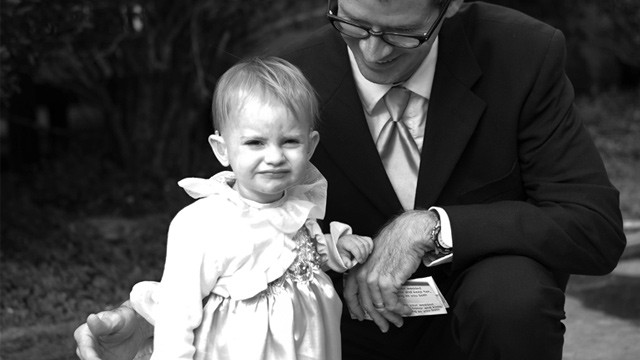Cord Blood Stem Cells Restore Toddler's Hearing
"It was traumatic," said Connor, of LaBelle, Fl, after learning about her daughter's condition. "It was like mourning the loss of a child."
At age 1, baby Madeleine was completely deaf in her right ear and her hearing was severely lost in the left, said Connor. While a hearing aid helped to amplify some sounds for Madeleine, it would never fully repair the damage in her ear.
But a simple experimental procedure that Connor enrolled in for Madeleine may have restored her hearing and reversed her condition.
In January 2012, Madeleine, 2, became the first child to undergo an experimental hearing loss treatment through an FDA-approved trial at Memorial Hermann-Texas Medical Center that infused stem cells from her own banked cord blood into her damaged inner ear.
Within the last six months, Connor says she's seen a dramatic improvement in Madeleine's ability to hear.
"Before, when she would hear something she would look all around," Connor said. "But now we notice that she turns in the right direction of the sound."
Madeleine was also able to speak for the first time, Connor said.
For more than two decades, umbilical cord blood transplantation -- either by a baby's own cord blood or another's, depending on the type of procedure -- has been used to treat otherwise fatal diseases including blood disorders, immune diseases, and some types of cancers.
Courtesy Stephanie Connor
Madeleine Connor, 2, underwent an... View Full Size
Regenerative therapy using cord blood stem cells is currently being studied as therapies to treat conditions including cerebral palsy and brain injury.
For the first time, doctors are experimenting with cord blood stem cells to regenerate hearing in children who have suffered hearing loss.
This yearlong study will follow 10 children, including Madeleine, ages 6 weeks to 18 months, who have acquired hearing loss and who have banked their cord blood with the Cord Blood Registry.
"There are a number of treatments for hearing loss, but most of them rely on amplification of noises, not reversal of the hearing loss," said Dr. Samer Fakhri, associate professor and program director in the Department of Otorhinolaryngology at Memorial Hermann-Texas Medical Center, and principal investigator of the study.
Since Madeleine is part of a study that is currently under way, it's unclear whether Connor's perceived improvement of Madeleine is really due to the stem cell procedure.
Madeleine has already had one follow-up appointment to test her speech and language development, which are indicators that her hearing has improved. She will have another one mid-July.
Fakhri said it's still too early to determine whether the procedure benefitted Madeleine, or may be beneficial for other children.
"If there's any improvement, it should be detected within six months to a year," Fakhri said. "We can't determine from just one child if there's an overall benefit."
If the study results show significant improvement overall among the collective children studied, children with acquired -- not genetic -- hearing loss, may be able to benefit from the procedure.
"We do not recommend that stem cells at this point now should be a treatment modality for hearing loss," Fakhri said.
Previous studies in mice suggest long-term hearing repair after stem cell infusion. Fakhri says it's likely that if the procedure works, children like Madeleine will have long-term restored hearing.
"The way the stem cells work is they support repair," said Fakhri. "Once you repair the damage, there's no suggestion that it will dwindle over time."
Connor said the improvement she has seen so far is enough that she is grateful that she enrolled in the trial, and she hopes the study will prove to be beneficial in repairing hearing loss so other children can be treated successfully.
"As a mom of special needs, if you're able to help a child it's huge," she said. "There's nothing that can compare to giving a child back something that's been taken away."

No comments:
Post a Comment